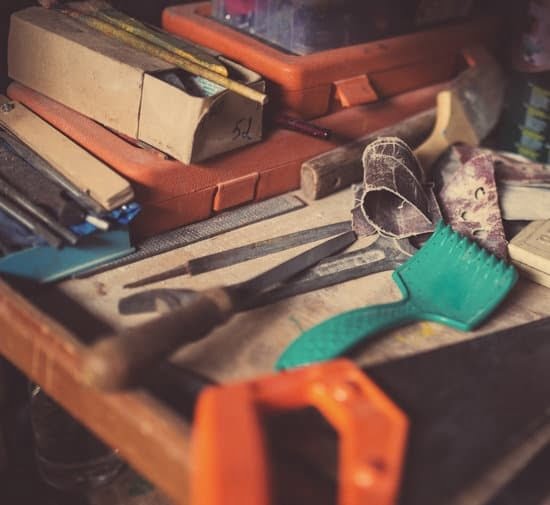Eastern Cedar, also known as Aromatic Red Cedar, is a popular wood choice for fine woodworking projects due to its distinct properties and beautiful natural color. In this article, we will explore the characteristics of Eastern Cedar and its suitability for fine woodworking.
We will delve into its grain, texture, and color, as well as the benefits and challenges of working with this type of wood. Additionally, we will provide tips, techniques, and tools for successfully working with Eastern Cedar, as well as showcase some projects that highlight the beauty of this wood.
When it comes to fine woodworking, choosing the right material is essential for creating high-quality pieces. So, is Eastern Cedar nice to work with for fine woodworking? Let’s find out by examining its unique properties and considering how it measures up in terms of both benefits and challenges.
Eastern Cedar’s notable features make it an attractive option for woodworkers looking to create stunning pieces. From its rich grain patterns to its captivating aroma, there are many reasons why Eastern Cedar is favored in the world of fine woodworking.
However, as with any wood type, there are also specific considerations that need to be taken into account when working with Eastern Cedar. Throughout this article, we will take an in-depth look at everything you need to know about using Eastern Cedar for your next woodworking project.
Properties of Eastern Cedar
Eastern cedar, also known as aromatic red cedar, is a popular choice for woodworking due to its appealing properties. When it comes to the grain, texture, and color of eastern cedar, this wood offers distinct advantages that make it an ideal material for fine woodworking projects.
The straight and even grain of eastern cedar makes it easy to work with, allowing for smooth cuts and detailed craftsmanship. Additionally, the fine texture of the wood gives it a polished look when sanded and finished.
In terms of color, eastern cedar boasts a rich reddish-brown hue that adds warmth and character to woodworking creations. This natural color can vary depending on the specific piece of wood, ranging from light tones to deeper shades. Woodworkers appreciate the versatility of eastern cedar’s color as it can be beautifully enhanced with different finishes or left untreated to showcase its natural beauty.
The pleasant aroma that emanates from eastern cedar is another distinctive trait that sets it apart from other types of wood. This natural scent not only adds to its appeal but also serves as a natural insect repellent and helps prevent decay. Many woodworkers find this aspect of eastern cedar particularly beneficial, especially when creating pieces that will be used in outdoor environments or in furniture intended for long-term use.
| Characteristic | Description |
|---|---|
| Grain | Straight and even grain allows for smooth cuts and detailed craftsmanship |
| Texture | Fine texture gives a polished look when sanded and finished |
| Color | Rich reddish-brown hue with variations from light to deep tones |
| Aroma | Natural scent acts as an insect repellent and prevents decay |
The Benefits of Working With Eastern Cedar for Fine Woodworking
Eastern cedar, also known as red cedar or aromatic cedar, is a popular choice for fine woodworking due to its numerous benefits. Whether you are crafting furniture, cabinets, or decorative items, the unique properties of eastern cedar make it an attractive option for woodworkers. Here are some of the benefits of working with this type of wood:
- Aromatic Qualities: One of the most appealing features of eastern cedar is its pleasant natural aroma. This distinctive scent not only adds to the overall appeal of woodworking projects but also acts as a natural insect repellent, making it ideal for storage chests and closets.
- Natural Resistance: Eastern cedar contains natural compounds that make it resistant to decay and insect damage. This means that items made from this wood are more durable and require less maintenance over time.
- Beautiful Grain: The grain pattern of eastern cedar is visually striking, featuring a mix of dark knots and swirling patterns. This makes it an excellent choice for creating visually appealing pieces that showcase the natural beauty of the wood.
In addition to these advantages, eastern cedar is also relatively lightweight and easy to work with using both hand tools and power tools, making it suitable for a wide range of woodworking projects.
Furthermore, its soft texture allows for intricate carving and detailing, which can add depth and dimension to fine woodworking creations. Additionally, because it is readily available in many lumber yards and home improvement stores, eastern cedar is a convenient option for woodworkers looking to source high-quality materials for their projects.
Challenges of Working With Eastern Cedar
Eastern cedar is a popular choice for fine woodworking due to its unique characteristics, but working with this wood does come with its challenges. Understanding these challenges is essential for achieving success in woodworking projects using eastern cedar.
One of the primary challenges of working with eastern cedar is its softness and fragility. This can make it prone to splintering, especially when cutting or shaping the wood. Additionally, its natural oils can cause issues with adhesives and finishes if not properly addressed.
Another challenge is the presence of knots in eastern cedar, which can affect the overall stability of the wood. These knots are not only dense but also resinous, making them difficult to work through without causing damage to the surrounding wood.
Additionally, eastern cedar has a strong and distinct aroma that some woodworkers find overpowering. While this characteristic adds to its appeal for certain projects, it can be challenging to work with for individuals sensitive to strong scents.
Despite these challenges, many woodworkers appreciate the unique beauty and aromatic qualities of eastern cedar and find that the benefits outweigh the difficulties when working on fine woodworking projects.
To address these challenges when working with eastern cedar, here are some tips:
- Use sharp tools to minimize splintering and make clean cuts.
- Pre-treat knot areas with stabilizing agents before incorporating them into a project.
- Work in a well-ventilated area when handling eastern cedar to mitigate the strong scent.
Overall, while there are challenges associated with working with eastern cedar for fine woodworking projects due to its softness, knots, and strong scent, many craftsmen believe that these qualities add a level of character that sets their pieces apart. By understanding how these unique characteristics may impact your projects and taking steps to address them through proper techniques and tool selection, you can create stunning woodworking pieces that showcase the beauty of eastern cedar.
Tips for Working With Eastern Cedar
When it comes to working with Eastern Cedar for fine woodworking, there are a few tips and tricks that can help ensure success in your projects. This section will explore some techniques and tools that are particularly beneficial when working with this type of wood.
Techniques for Working With Eastern Cedar
One of the key characteristics of Eastern Cedar is its softness, which can make it prone to splintering. To avoid this, it’s important to use sharp cutting tools and to work with the wood carefully. Additionally, using a slow feed rate on power tools can help prevent tear-out and ensure a smoother finish.
Another key technique for working with Eastern Cedar is sanding. Due to its softness, this wood can be easily damaged if not sanded properly. It’s best to start with a finer grit sandpaper and gradually work your way up to a coarser grit to achieve the desired smoothness without causing any damage to the wood.
Tools for Working With Eastern Cedar
When working with Eastern Cedar, it’s important to have the right tools at your disposal. Sharp chisels and carving knives are essential for precision work, while hand planes can be used to create a smooth and even surface on this soft wood. For shaping and detailing, rasps and files are indispensable tools for working with Eastern Cedar.
Additionally, having a good quality dust extraction system is crucial when working with this type of wood, as the natural oils in Eastern Cedar can cause respiratory irritation if inhaled in large quantities. Using a vacuum or dust collector while cutting or sanding can help minimize the risk of breathing in cedar dust particles.
By employing these techniques and utilizing the right tools, working with Eastern Cedar for fine woodworking can be a rewarding experience, allowing artisans to showcase the unique beauty of this wood in their projects.
Projects Perfect for Eastern Cedar
Eastern Cedar, with its distinct grain and rich color, is a popular choice for fine woodworking projects. Its aromatic scent and natural resistance to decay make it an ideal material for creating beautiful and durable pieces. When choosing projects perfect for Eastern Cedar, woodworkers have a variety of options to showcase the beauty of this unique wood.
Furniture
One of the most common uses for Eastern Cedar in fine woodworking is crafting furniture. The rich reddish-brown color and pronounced grain of this wood can enhance the visual appeal of tables, chairs, cabinets, and other pieces. The natural aroma of cedar also adds an inviting element to furniture, making it a great choice for bedroom sets, blanket chests, or storage benches.
Outdoor Structures
Due to its natural resistance to decay and insects, Eastern Cedar is an excellent choice for outdoor structures. This wood is often used in the construction of fences, decks, pergolas, and gazebos. Its durability and ability to withstand harsh weather conditions make it a reliable option for exterior woodworking projects.
Decorative Items
Crafting decorative items from Eastern Cedar allows woodworkers to highlight the unique characteristics of the wood. From intricate carvings to turned bowls and vases, the distinct color and grain patterns of this wood can be showcased in smaller items like jewelry boxes, picture frames, or ornaments. The aromatic scent will also add an extra dimension to these decorative pieces.
Maintenance and Care
Eastern cedar, known for its aromatic scent and beautiful color, is a popular choice for fine woodworking projects. However, it requires proper maintenance and care to preserve its quality over time. Whether you are creating furniture, cabinetry, or intricate wood carvings, understanding how to care for eastern cedar is essential for ensuring the longevity of your finished pieces.
One of the key factors in maintaining eastern cedar is protecting it from moisture and humidity. This wood species is prone to warping and cracking if exposed to excessive moisture, so it’s important to store finished projects in a dry environment. Additionally, applying a sealant or protective finish can help shield the wood from environmental elements.
Another aspect of caring for eastern cedar is addressing any potential insect infestations. While the natural oils in the wood act as a natural insect repellent, it’s still important to regularly inspect your projects for any signs of pests. Implementing preventive measures such as using insect-repellent finishes and keeping your workspace clean can help safeguard against infestations.
Additionally, regular cleaning and dusting will not only help maintain the appearance of eastern cedar but also prevent dirt and debris from causing damage over time. Using a soft cloth or gentle brush to remove dust buildup will keep your woodworking projects looking their best for years to come.
| Aspect of Care | Recommendation |
|---|---|
| Moisture Protection | Store in dry environment; apply sealant or protective finish |
| Insect Infestation Prevention | Regular inspection; use insect-repellent finishes; maintain cleanliness |
| Cleaning and Maintenance | Regularly clean and dust with soft cloth or gentle brush |
Conclusion
In conclusion, Eastern Cedar is indeed a nice wood to work with for fine woodworking, especially for those who appreciate its unique properties and characteristics. Its natural resistance to decay and insect infestation makes it an ideal choice for outdoor furniture and other projects that will be exposed to the elements. The beautiful color variation and distinct fragrance of Eastern Cedar also add to its appeal, making it a popular choice for creating chests, closets, and other storage solutions.
While there are certainly challenges in working with Eastern Cedar, such as its tendency to splinter and the potential for allergic reactions in some individuals, the benefits far outweigh these drawbacks for many woodworkers. With the right techniques and tools, such as sharp blades and proper ventilation, these challenges can be overcome to create stunning woodworking projects that showcase the beauty of this wood.
Ultimately, whether or not Eastern Cedar is a nice wood to work with for fine woodworking depends on individual preferences and project requirements. For those who value its unique characteristics and are willing to put in the effort to work with them, Eastern Cedar can result in exquisite pieces that stand out for their natural beauty and durability.
Frequently Asked Questions
Is Eastern Red Cedar Good for Woodworking?
Eastern Red Cedar is a popular choice for woodworking due to its natural resistance to decay and insect damage. It also has a pleasant aroma and beautiful reddish-brown color, making it ideal for creating attractive furniture, outdoor structures, and decorative items. Its durability and stability make it a good option for various woodworking projects.
What Are the Disadvantages of Cedar Wood?
Despite its many advantages, cedar wood does have some disadvantages. It can be quite expensive compared to other types of wood, which may not fit everyone’s budget.
Additionally, cedar wood is softer than some hardwoods, so it may not be suitable for heavy-duty woodworking projects that require more durable materials. Lastly, the natural oils in cedar wood can sometimes cause issues with certain finishes or glues.
Can You Use Cedar for Woodworking?
Cedar is definitely a viable option for woodworking due to its workability and attractive appearance. It is commonly used in outdoor applications such as decking, fencing, and siding because of its natural resistance to rot and insects.
However, cedar can also be used for indoor woodworking projects such as cabinets, furniture, and decorative items. Its natural beauty and pleasant aroma make it a desirable choice for many woodworkers.

Hi everyone! I’m a woodworker and blogger, and this is my woodworking blog. In my blog, I share tips and tricks for woodworkers of all skill levels, as well as project ideas that you can try yourself.





